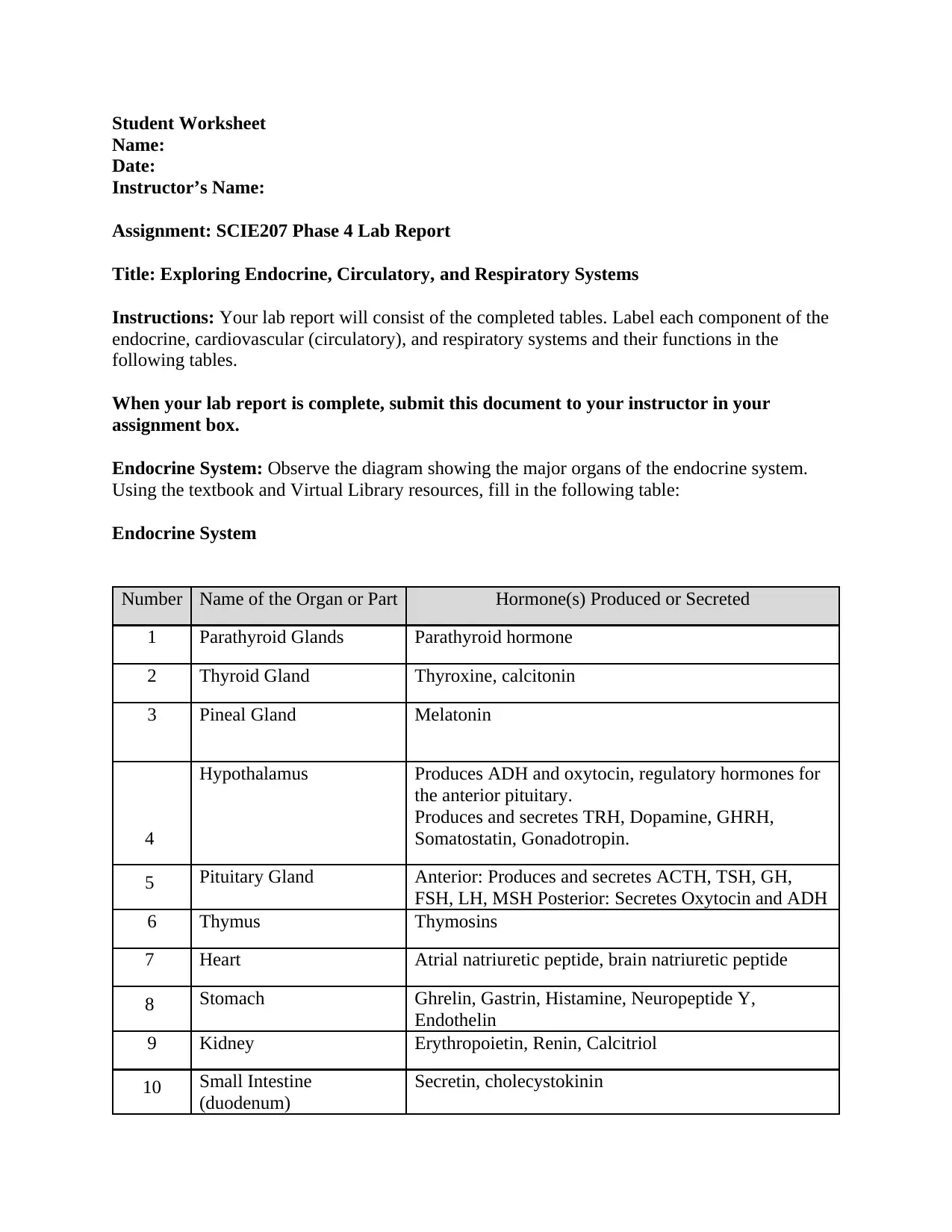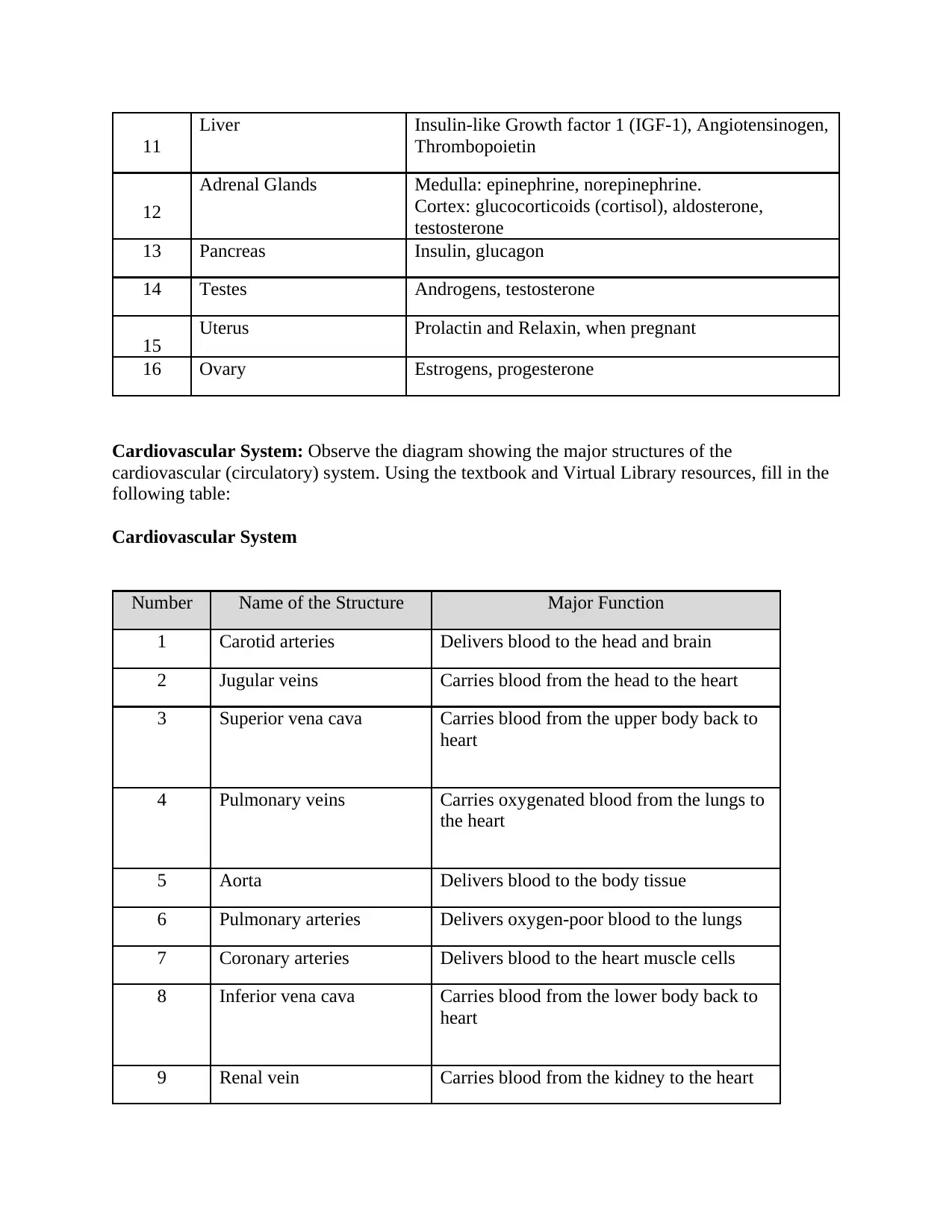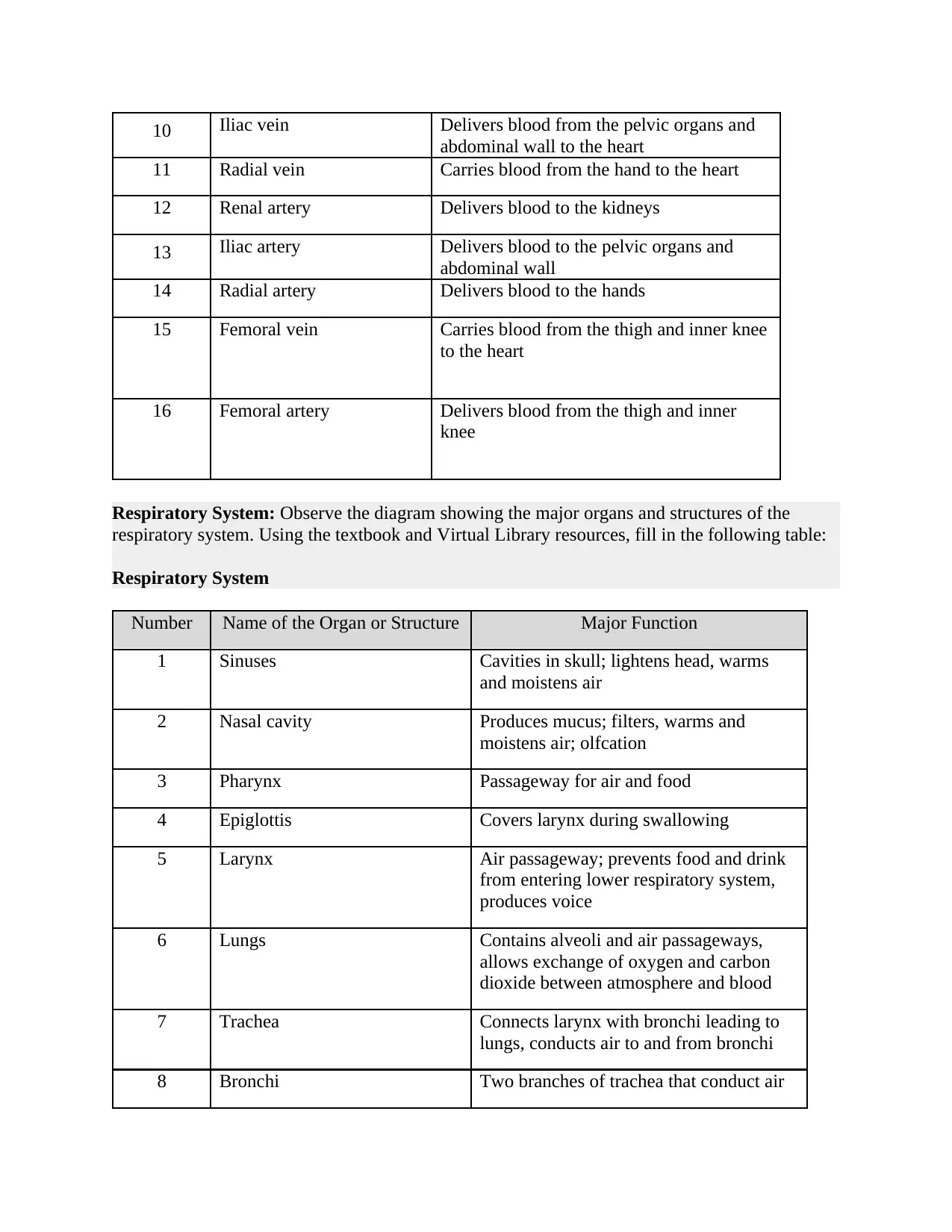SCIE207 Lab Report: Endocrine, Circulatory, and Respiratory Systems
VerifiedAdded on 2019/09/16
|3
|691
|306
Homework Assignment
AI Summary
This lab report, designed for a SCIE207 biology course, comprehensively examines three crucial human body systems: the endocrine, circulatory (cardiovascular), and respiratory systems. The report is structured around three tables, each dedicated to a specific system. The endocrine system table identifies major organs like the parathyroid glands, thyroid gland, pituitary gland, adrenal glands, pancreas, testes, and ovaries, listing the hormones they produce or secrete. The cardiovascular system table details the structures, including the carotid arteries, jugular veins, aorta, pulmonary veins and arteries, coronary arteries, and the vena cava, and their primary functions in blood circulation. The respiratory system table covers the organs and structures involved in breathing, such as the sinuses, nasal cavity, pharynx, larynx, lungs, trachea, bronchi, bronchioles, alveoli, intercostal muscles, and diaphragm, outlining their respective roles in gas exchange and air passage. The report synthesizes information from textbooks and virtual library resources to provide a clear and organized overview of each system's components and functions, offering a valuable resource for students studying human anatomy and physiology.
1 out of 3










![[object Object]](/_next/static/media/star-bottom.7253800d.svg)